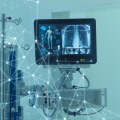For the past three decades, medical imaging has been revolutionizing the healthcare industry. This technology has enabled doctors to detect diseases in their early stages, leading to better patient outcomes. Early detection of diseases allows for more precise treatment and improved results. Advances in medical imaging have also improved the accuracy of screening tests, allowing for earlier diagnoses.
Without these advances, it would be impossible to detect diseases until they reach a much more dangerous stage. Molecular imaging has taken medical imaging to the next level, allowing for detection of diseases at the cellular level. This has opened up a world of possibilities for more effective treatments. Computing has also played a major role in medical imaging, increasing the number of images produced in radiology departments. To manage these large volumes of images, other technologies have emerged. In January 1896, less than a year after German physicist Wilhelm Rontgen discovered radiography, an X-ray imaging system was used for medical purposes.
High-quality images may seem expensive at first, but they save an enormous amount of money on hospitalizations and avoid more extensive and invasive treatments that would be needed if the disease were detected at a later stage. The evolution of medical imaging has led to the development of other technologies such as MRI (magnetic resonance imaging) and computed tomography (CT). Ultrasound, nuclear medicine technology, and radiography were also used as medical imaging modalities before the widespread use of computer technology in healthcare. Medical imaging technology has allowed doctors to diagnose and even treat diseases without having to use a scalpel. In 1975, at the Ochsner Health System, medical ultrasound imaging technology was introduced to the world. Magnetic resonance imaging (MRI) is now a fundamental tool for obtaining a complete picture of soft tissue, including extremely sensitive areas such as the brain. Proton beam technology is currently being developed in order to obtain more accurate medical images and a safer and more complete treatment of cancerous tissue.
To take advantage of the repair and maintenance opportunities of medical imaging technology, you should start with the right education.






